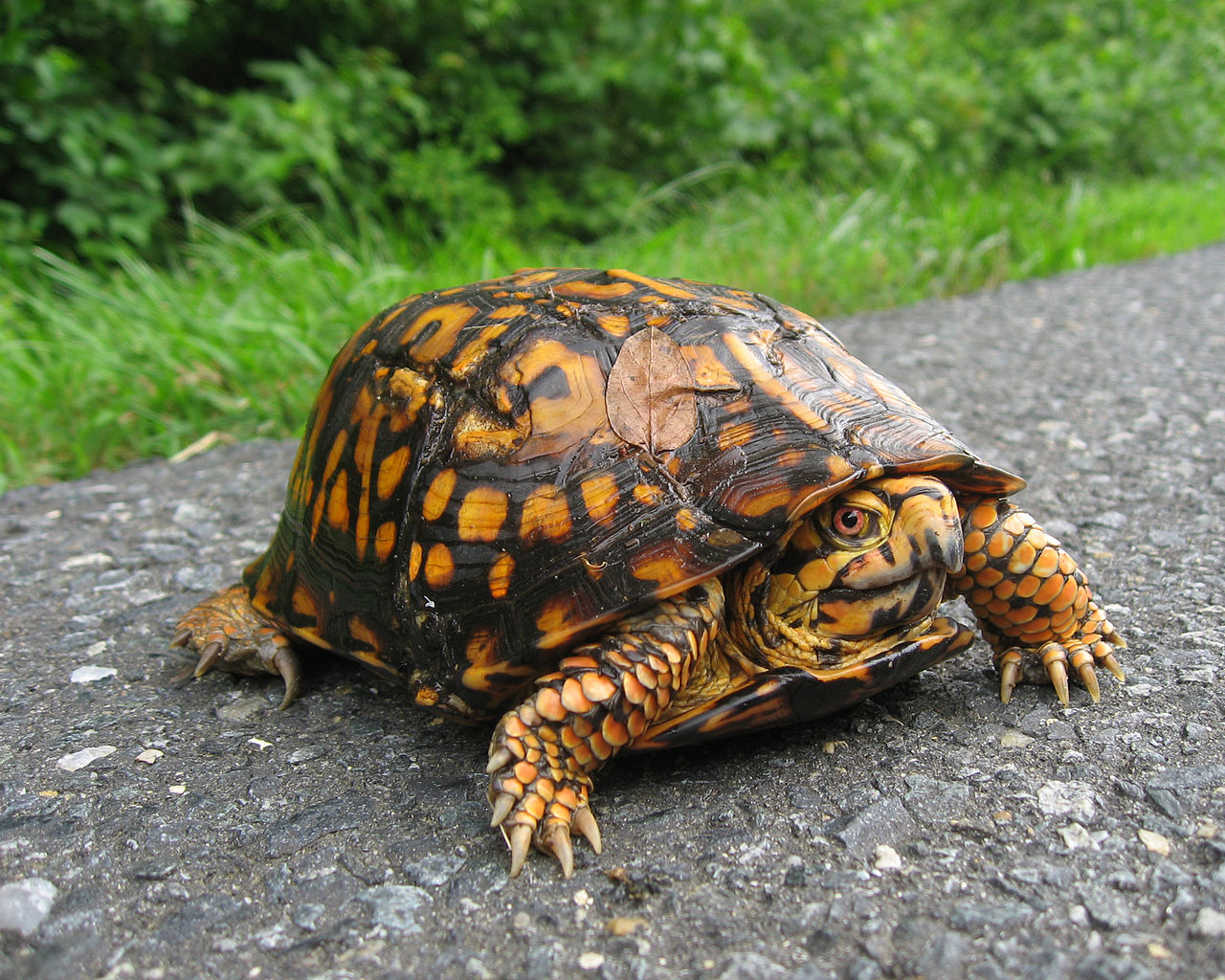Understanding The Box Turtle - A Terrestrial Wonder
When you hear the name "box turtle," it actually refers to a pretty wide collection of shelled creatures that roam our planet. These fascinating animals are, in a way, quite well-known across different parts of the globe, particularly in places like North America and some areas of Asia. They are, you know, often spotted by folks out and about, especially the ones living here in the United States and Mexico. It's really quite something how many people recognize these particular shelled friends, and that's probably because they have a very distinct look that sets them apart from other turtles you might come across.
These creatures, which some people call "testudines," are a group that truly stands out, more or less, in the animal world. They're not just one kind of animal; the name "box turtle" covers a few different types, each with its own special qualities, yet all sharing some core features that make them, well, box turtles. For instance, you might be thinking of the ones that make their homes in the United States, or maybe, just maybe, your mind goes to the ones found over in Asian lands. It's a bit like a big family, really, with members living in different neighborhoods but still connected by their unique traits.
Their distinct appearance, particularly their shell, is a big reason why they are so easily recognized. They carry a kind of natural protection that is, frankly, quite clever. This feature is what gives them their common name, allowing them to, in a way, pull themselves into a safe little space when they feel a bit threatened. This clever trick is something that makes them, you know, truly unique among their shelled relatives, offering them a pretty good defense against things that might want to bother them in their natural surroundings.
Table of Contents
- What is a Box Turtle, Anyway?
- Where Do Box Turtles Make Their Homes?
- How Many Kinds of Box Turtles Are There?
- The Eastern Box Turtle - A Familiar Face
- What Makes a Box Turtle So Special?
- The Box Turtle's Clever Shell Design
- Are Box Turtles Like Tortoises?
- Protecting Our Box Turtle Friends
What is a Box Turtle, Anyway?
So, when someone talks about a "box turtle," they are, in fact, referring to a general name that covers a few different kinds of turtles. It's not just one single creature, you know? This common way of speaking can point to those specific types of turtles that belong to the genus called Cuora or perhaps Pyxidea. These particular ones are, more often than not, the ones we think of as the Asian box turtles, living far across the ocean. On the other hand, and this is probably what most people mean, it can also refer to the species that are part of the genus Terrapene. These are the ones that are, like, typically found closer to home for many of us in North America.
It's a bit like how "dog" can mean a lot of different breeds, but they're all still dogs, you know? These North American box turtles, specifically, are members of the Terrapene group. There are, as a matter of fact, a number of distinct kinds of box turtles that make their lives in North America. These include, for instance, the common box turtle, the Coahuilan box turtle, the Mexican box turtle, the spotted box turtle, and also the ornate box turtle. Each of these, in a way, has its own little quirks and places it prefers to call home, but they all share that characteristic "box" feature.
Where Do Box Turtles Make Their Homes?
These interesting shelled creatures, the box turtles, are found living across a pretty wide stretch of land, actually. They are, you know, native to parts of the United States, Mexico, and even some areas in Asia. So, their natural habitat really spans quite a bit of the globe, which is, frankly, pretty neat to think about. When we talk about the ones in North America, you'll find them, more or less, throughout the whole continent. This includes, for instance, the United States and Mexico, where they are, like, pretty well-known residents.
More specifically, if you were to look at a map, you'd see them making their homes in various regions. For example, they are present along the eastern Gulf Coast of Mexico, and they also extend down into the Yucatan Peninsula. So, they're not just in one small spot, but rather, they've spread out and adapted to different environments across these countries. This wide distribution means that, you know, many people in these areas have a chance to see these unique turtles in their natural surroundings, which is, honestly, a pretty cool experience.
How Many Kinds of Box Turtles Are There?
That's a good question, and the answer, in a way, has a couple of parts because the common name "box turtle" covers a few different groups. When you consider the North American and Asian groups together, there are, as a matter of fact, seven species and seven subspecies that are generally recognized. These are, you know, separated into two main groups, which makes sense given their different geographical locations. It's like having different branches on the same family tree, all sharing a common ancestor but evolving in their own ways.
However, if we focus just on the genus of turtles that are native to the United States, Mexico, and Asia, there are, apparently, currently four recognized species of box turtles. These include, for instance, the common box turtle and the Coahuilan box turtle. This slight difference in numbers just shows how, you know, the classification of animals can sometimes be a bit fluid, with different ways of counting and categorizing based on how scientists look at them. But either way, it's clear there's a good variety within the box turtle family.
The Eastern Box Turtle - A Familiar Face
Among the many different types of box turtles, the Eastern box turtle, which is scientifically known as Terrapene carolina carolina, is, like, one of the ones you're most likely to see out in the wild. If you live in a place like Massachusetts, for example, it's actually the only turtle that lives completely on land that you'll find there. This particular box turtle is, in some respects, a very common sight for people who spend time outdoors in its habitat. Its recognizable appearance and its tendency to live in places where people might cross paths with it mean it's, you know, often the first kind of box turtle that comes to mind for many.
They are, essentially, among the most widely recognized shelled creatures in both the U.S. and Mexico. This popularity is, perhaps, due to their distinct look and their somewhat predictable habits. The name "box turtle" itself, in fact, comes from a very specific and clever part of their physical makeup, which we'll get into a little more detail about soon. But for now, just know that this particular box turtle, the Eastern one, is a pretty big deal in the world of terrestrial turtles, and its presence is, like, a good sign of a healthy environment.
What Makes a Box Turtle So Special?
So, what truly sets a box turtle apart from, say, other turtles you might encounter? Well, one of the most striking things about them is, honestly, their shell. They have a very distinct upper shell, which is called a carapace, that is, you know, quite high and rounded. It's not flat like some other turtles; instead, it has this kind of domed shape that makes them look, in a way, like a little protective helmet. This particular shape isn't just for looks, though; it serves a very important purpose for the box turtle's well-being.
Then there's the bottom shell, which is known as the plastron. This part is, typically, quite flat. But the real magic, the thing that gives the box turtle its very name, is how these two parts of the shell work together. It's, like, a really clever bit of natural engineering. This design allows them to do something that most other turtles can't, and it's a primary reason why they are, essentially, so well-protected in their natural surroundings.
The Box Turtle's Clever Shell Design
The structure of a box turtle's shell is, frankly, quite remarkable, and it's the reason for their common name. They have this high, rounded upper shell, the carapace, which we just talked about. And then there's the flattened bottom shell, the plastron. But here's the truly unique part: the plastron of a box turtle actually has a hinge. This hinge is, like, a very important feature that allows them to do something pretty incredible when they feel a bit scared or threatened.
Because of this hinged plastron, a box turtle can, you know, pull its head and legs inside its shell and then actually close up the front and the rear openings. It's almost like they have a little door on both ends of their bottom shell. When they do this, they create a kind of fully enclosed "box" around their entire body. This means that, basically, their whole body is tucked away safely inside their shell, making it extremely difficult for any creature that might want to harm them to get to them. It's a truly effective way for the box turtle to protect itself from things like predators, giving them a very good chance of staying safe.
Are Box Turtles Like Tortoises?
It's a pretty common thing for people to see a box turtle and think, "Oh, that looks like a tortoise!" And it's true, they do have some things in common that make them seem similar, especially since both box turtles and tortoises tend to live on land. Their general look and the way they move around on the ground can make them appear, in a way, quite alike to the casual observer. However, despite these superficial similarities, North American box turtles, which are part of the genus Terrapene, are, in fact, members of a different group of reptiles entirely.
While they might share some habits and a general appearance with tortoises, they are, you know, distinct in their biological classification. Tortoises are a specific kind of turtle that is known for being completely terrestrial, meaning they live only on land, and they have particular physical traits that set them apart. Box turtles, while often terrestrial, have that unique hinged shell and belong to a different lineage. So, even though they might look similar at first glance, they are, in some respects, quite different creatures when you look at their family tree.
Protecting Our Box Turtle Friends
Knowing a little more about these fascinating box turtles, from their varied species across North America and Asia to their incredibly clever protective shells, helps us appreciate them, you know, just a little more. They are, after all, some of the most recognized shelled creatures in their natural environments, and their unique way of staying safe is, frankly, quite impressive. Whether it's the common box turtle, the Coahuilan, or the Eastern box turtle, each one plays its part in the natural world.

Eastern Box Turtle – Care Tips and Facts - Box Turtle Site

All about box turtles | Welcome Wildlife

Common box turtle | reptile | Britannica